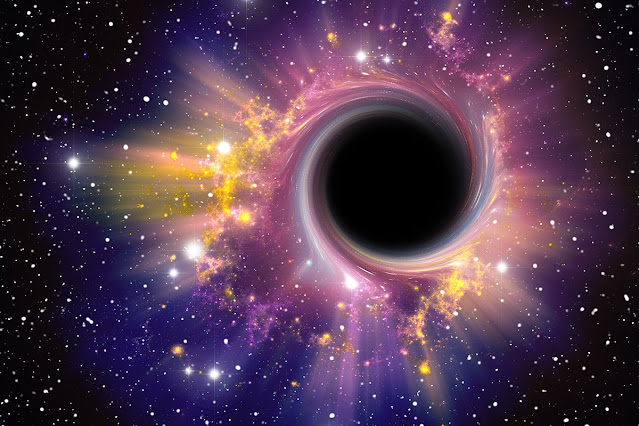Physicists Propose New Theory on What Happened Before the Big Bang
Assuming that the Big Bang was responsible for the creation of the universe 13.7 billion years ago, what caused the cosmic explosion? Recently, a group of physicists from the Perimeter Institute has put forth a novel theory regarding what may have occurred before the Big Bang.
This theory, grounded in rigorous mathematics, is both verifiable and fascinating, and has even been featured on the cover of Scientific American under the title “The Black Hole at the Beginning of Time.”
According to this new hypothesis by the Perimeter Institute physicists, our universe may have originated from a collapsing star in a separate world predating the Big Bang. They propose that the Big Bang we perceive could be a three-dimensional “illusion” stemming from this event.

According to conventional beliefs regarding the Big Bang, the universe began with a singularity, an exceedingly hot and dense point where the laws of physics no longer apply. However, this perspective raises a concern since it is difficult to fathom how a universe as ordered and predictable as ours could have arisen from the chaos of a singularity.
Traditional beliefs about the Big Bang suggest that the universe commenced with a singularity—an incredibly hot, dense point where the laws of physics cease to function. This viewpoint presents a problem, as it is challenging to comprehend how our relatively uniform and predictable universe could have emerged from the disorder of a singularity.
This new hypothesis suggests that our universe may have originated from an alternate reality governed by distinct laws of physics. In this alternate world, a star may have imploded, generating a black hole that ultimately led to the formation of our universe, also known as the Big Bang. The collapse of the star might have produced a wormhole or bridge connecting the two universes.
Physicists are captivated by this theory since it is supported by sound mathematical principles and can be tested experimentally. The authors of the theory have proposed various approaches to verify their hypothesis, including the examination of cosmic microwave background radiation, the residual glow of the Big Bang.
While the theory remains in its infancy and has not been thoroughly tested, it offers a fresh outlook on the Big Bang and prompts fascinating questions about our universe’s nature.
The researchers argue that the Big Bang we experience may be the three-dimensional “illusion” of a collapsing star in a drastically different world.
“Understanding the Big Bang itself is cosmology’s greatest challenge,” write Perimeter Institute Associate Faculty member Niayesh Afshordi, Affiliate Faculty member and University of Waterloo professor Robert Mann, and PhD student Razieh Pourhasan.
Common belief holds that the Big Bang began with a singularity—an indescribably hot and dense spacetime phenomenon in which the laws of physics disintegrate. Singularities are enigmatic, and our understanding of them is limited.
“As far as physicists know, dragons could have come flying out of the singularity,” Afshordi says in an interview with Nature.
The authors suggest that the issue lies in the Big Bang hypothesis proposing that our relatively comprehensible, uniform, and predictable cosmos emerged from a singularity’s physics-defying chaos. It seems implausible. Thus, perhaps something else occurred. Perhaps our cosmos was never singular to begin with.
In their proposed scenario, our known universe could be the three-dimensional “surface” encircling the event horizon of a four-dimensional black hole. In this context, the universe’s creation happened when a star in a four-dimensional cosmos collapsed into a black hole.
In our three-dimensional world, black holes possess two-dimensional event horizons, signifying the “point of no return.” Conversely, in a four-dimensional world, a black hole’s event horizon would be three-dimensional.
According to this hypothesis, our universe did not originate from within the singularity but instead emerged outside of its event horizon, where it was shielded. It is believed to have formed as a result of a four-dimensional star’s explosion and has retained its status as such.
Although the idea may appear implausible, the researchers argue that it is grounded in the most advanced space-time mathematical frameworks of the present day. They have employed holographic methods to depict the Big Bang as a cosmic illusion, and in the process, have potentially resolved longstanding cosmic mysteries while offering predictions that can be tested.
Do not forget to share your opinion with us to provide you with the best posts !



0 Comments